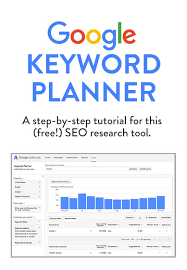
Content marketing and SEO go hand-in-hand with today’s digital landscape. If you want to attract organic traffic to your website, simply creating great content isn’t enough—you need to make sure that content is optimized for search engines. The magic happens when your content is both valuable to your audience and strategically structured to rank on search engine results pages (SERPs).
In this blog post, I’ll walk you through how to create content that ranks on search engines while keeping your readers engaged. Along the way, we’ll explore some helpful stats, examples, and actionable tips to make your content marketing work for SEO. Let’s dive in!
Why Content Marketing is Vital for SEO
Content marketing isn’t just about writing blog posts or creating infographics. It’s a powerful SEO tool that can help businesses attract, engage, and convert prospects. In fact, 61% of marketerssay improving SEO and growing their organic presence is their top inbound marketing priority.
When done right, content marketing enhances your SEO in the following ways:
- It provides valuable information that search engines reward by improving your rankings.
- More content equals more keyword opportunities. The more you write, the more opportunities you have to rank for relevant keywords.
- It encourages backlinking. Other websites are more likely to link to content that offers genuine value, which boosts your authority in the eyes of search engines.
Now that you know why content marketing is so important for SEO, let’s break down how you can create content that not only attracts readers but also ranks high on Google.
1. Conduct Thorough Keyword Research
Keyword research is the foundation of any successful SEO content marketing strategy. You need to understand what your audience is searching for and which keywords they’re using to find answers.
Use tools like Ahrefs, Google Keyword Planner, or SEMRush to identify relevant keywords. Focus on a mix of:
- Primary keywords: The main focus of your content. For instance, for this blog post, “Content Marketing for SEO” would be the primary keyword.
- LSI (Latent Semantic Indexing) keywords: These are semantically related terms that Google uses to understand the context of your content. For example, “SEO strategy,” “on-page SEO,” or “organic search traffic.”
- Long-tail keywords: These are specific phrases that are often easier to rank for, like “how to create content that ranks.”
Example: If you’re writing a blog post about fitness routines, your primary keyword could be “workout routines,” and your long-tail keyword could be “best 30-minute home workout routines for beginners.”
Pro Tip: Aim for keywords that have a good balance between search volume and competition. A high search volume keyword is great, but if it’s too competitive, your content may struggle to rank. Long-tail keywords are often easier to rank for and can bring in highly targeted traffic.
2. Craft Engaging, SEO-Friendly Headlines
Your headline is the first thing both search engines and readers see, so make it count! An SEO-friendly headline should be:
- Clear and concise: Let the reader know exactly what to expect.
- Keyword-rich: Include your primary keyword in the headline.
- Enticing: Add an emotional hook to grab attention.
For example, instead of titling your post “Content Marketing Tips,” opt for something more specific like “10 Proven Content Marketing Tips to Boost Your SEO”.
According to Backlinko, titles between 15 and 40 characters perform the best in Google search. Use numbers, questions, or power words (like “Proven,” “Ultimate,” and “Best”) to make your headline stand out.
3. Write Quality, Long-Form Content
When writing your content, make sure it’s:
- Comprehensive: Cover the topic in detail.
- Well-structured: Use headings (H2, H3), bullet points, and short paragraphs to make it easy to read.
- Readable: Keep sentences short and avoid jargon. Your content should be accessible to both beginners and experts.
Example: Let’s say you’re writing an article on digital marketing trends. Instead of a short 500-word post, dive deep into each trend, providing actionable tips, stats, and examples. This gives your readers more value and signals to Google that your content is thorough and authoritative.ur readers more value and signals to Google that your content is thorough and authoritative.
4. Optimize On-Page SEO
On-page SEO refers to optimizing elements within your content that affect your ranking. Here are some key elements to focus on:
- Use your primary keyword in the title, first paragraph, and a few times throughout the article, but avoid keyword stuffing. Google is smart, and so are your readers!
- Optimize your meta description: This is the short description that appears under your title in the search results. Make it compelling and include your primary keyword.
- Use internal and external links: Internal links help guide users to related content on your site, improving user experience and SEO. External links to authoritative sources add credibility.
- Optimize images: Use descriptive file names and alt text for any images you include.
Example: If you’re writing a blog post about “healthy recipes,” make sure to include links to related posts (e.g., “10-minute meals”) and external links to credible sources like health blogs or nutritional studies.
5. Incorporate Visual Content
Content isn’t limited to text—visuals play a huge role in boosting SEO. Adding images, infographics, videos, and charts enhances the user experience and increases engagement. Research shows that articles with images get 94% more views than those without.
Videos are especially powerful. According to HubSpot, including a video in your content can increase organic traffic from SERPs by up to 50%.
Example: If your blog is about “The Benefits of Meditation,” include a short video tutorial or infographic showing meditation techniques. This makes your content more shareable and keeps users on your page longer, improving your dwell time—a ranking factor for Google.
6. Promote Your Content
Creating great content is only half the battle—you need to promote it too! Share your content across social media platforms, in newsletters, and with relevant communities.
Also, reach out to other blogs or websites in your niche and offer guest posts or links to their content. This could help you build backlinks, which is another important ranking factor. According to Ahrefs, backlinks from high-authority websites are among the top two ranking factors in Google’s algorithm.
7. Regularly Update Old Content
SEO is not a one-and-done game. Search engines and trends change constantly, so it’s essential to update your content regularly. By revisiting older posts, you can refresh outdated information, add new statistics, and improve readability.
Google loves fresh content. Updating older articles can give them a ranking boost, bringing in new organic traffic without having to start from scratch.
Creating Content that Ranks
Creating SEO-optimized content that ranks well on Google doesn’t happen overnight—it requires strategy, patience, and constant refinement. By conducting thorough keyword research, writing high-quality content, optimizing for on-page SEO, and promoting your work, you’re setting yourself up for long-term success.
Need help getting your content to rank? As an experienced SEO content writer, I can help you create engaging, optimized content that drives organic traffic and boosts your business’s online presence.
Get in touch with me, Wambui Njuguna, for top-notchSEO content writing services. Let’s work together to bring your content to the top of Google search results!







